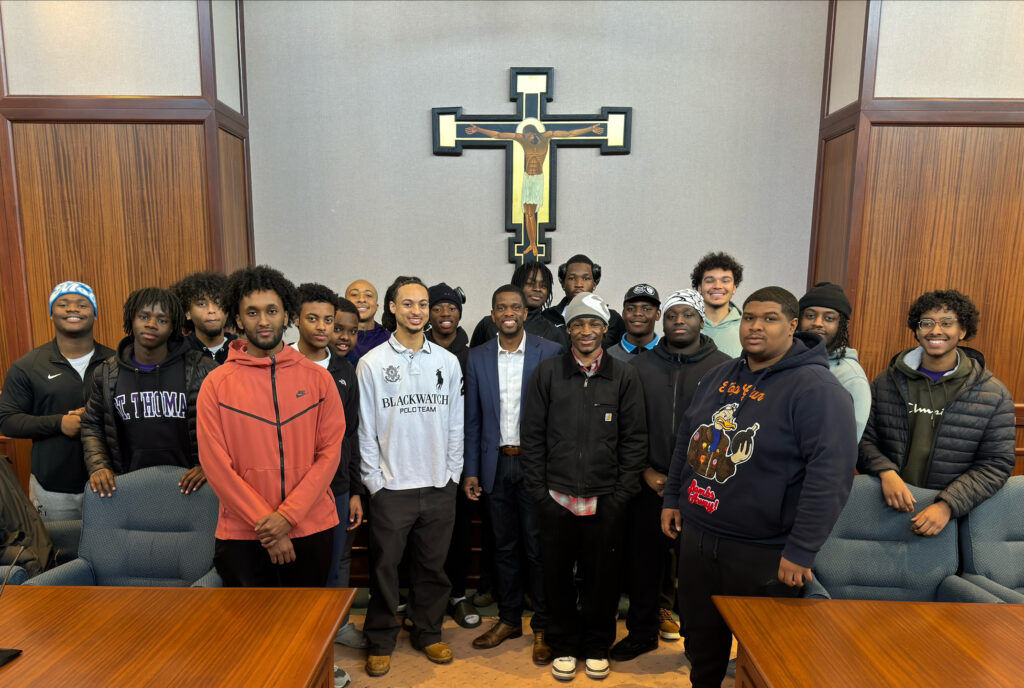Recently, I returned to campus for a periodic visit because of my responsibilities to the McNair Scholars Program. As I work on critical projects and initiatives and visit other institutions that face challenges in these tough economic times, I have learned much about their strengths and opportunities and compare them to my past work as a faculty member, administrator and diversity practitioner. I have seen scores of comparisons and unbelievable differences in what makes each campus operation unique.
Creating a campus that is diverse and inclusive is central to the successful fulfillment of our purpose as a Catholic university. We want the University of St. Thomas to be an exemplar for other institutions in the region and across the nation as they envision ways to enhance diversity and inclusion on their campuses. Tapping into the creative, intellectual and cultural skills of a variety of people is critical to realizing this goal.
Because change is sometimes difficult to bring about in the academy, especially in regards to diversity, I have to admit that on some days I feel that I have the toughest jobs one could ever love; however, it now seems clear that St. Thomas is reaching its diversity goal, in part, due to an increasingly diverse faculty both in race, ethnicity and gender as well as multicultural programs, speakers, panels, targeted community outreach initiatives, and academic enrichment programs such as McNair Scholars, Reaching Excellence in Academics and Leadership (REAL) and Summer Academy, NYSP/CAAPS, and STEPS.
Still, with all these advances in diversity, we have much work to do in building an inclusive community. Results from the 2007 "Opinion Survey on Campus Climate" were shared with the community-at-large in May 2008 and confirm this very point.
The 2007-09 "Biennial Report: Advancing Diversity … Working Towards Inclusion" highlights some – but certainly not all – of the most successful diversity initiatives out of my office for the past two years. In the following pages, you will see the impact of diversity within St. Thomas and beyond. We have made respectable progress on campus and in the community. The work that we engaged in as a university post-climate study recommendations has resulted in a more robust vision and framework of how we can achieve a more inclusive campus. The framework is inclusive excellence and it serves as a guide in our Diversity Action Plan (DAP) – "Striking Balance: Our Commitment to Inclusive Excellence." While we have not completed a comprehensive diversity planning process, I know that the most successful and promising diversity initiatives – whether ongoing or future – are manifested in the colleges and schools, across campus, and across unit. Eventually, these must be aligned with the four focus areas in DAP: (1) leadership commitment and involvement, (2) curriculum, education and training, (3) recruitment and retention and (4) community building, if we are to attain measurable progress as a university and in the community.
I strongly feel that inclusive excellence is a key component of a comprehensive strategy for achieving institutional excellence. This includes the academic excellence of all students in attendance, and concerted efforts to educate and equip them to succeed in a diverse society with sophisticated intercultural skills.
You will find other reports useful in recognizing our advancement in diversity over the past two years: the "McNair Scholars Viewbook" and "McNair Scholars Research Journal." These two publications also are visual examples of how to move diverse students into the realm of contributing to inclusive excellence that many universities aspire toward. Our students are why we exist, but more importantly providing access to success and seeing these diverse student populations thrive is the greatest indicator of meeting part of our institutional mission.
At this very moment, the University of St. Thomas, as is our nation, is experiencing a moment of decisive change that presents both a great challenge and great opportunity. Our challenge is to pursue the multiple dimensions of diversity beyond historical segregated categories (i.e., race, ethnicity, gender, sexual orientation, religion) to embrace the emerging complex diversity mixtures (i.e., multi-racial/multi-ethnic, new veterans, marital status, new immigrant, social class, spirituality). In short, how to balance becoming a more inclusive university that reflects the richness of our region, nation and world while honoring our Catholic character.
I invite you to join us in preserving and strengthening this university’s greatest asset – its growing community of diverse people and ideas.






